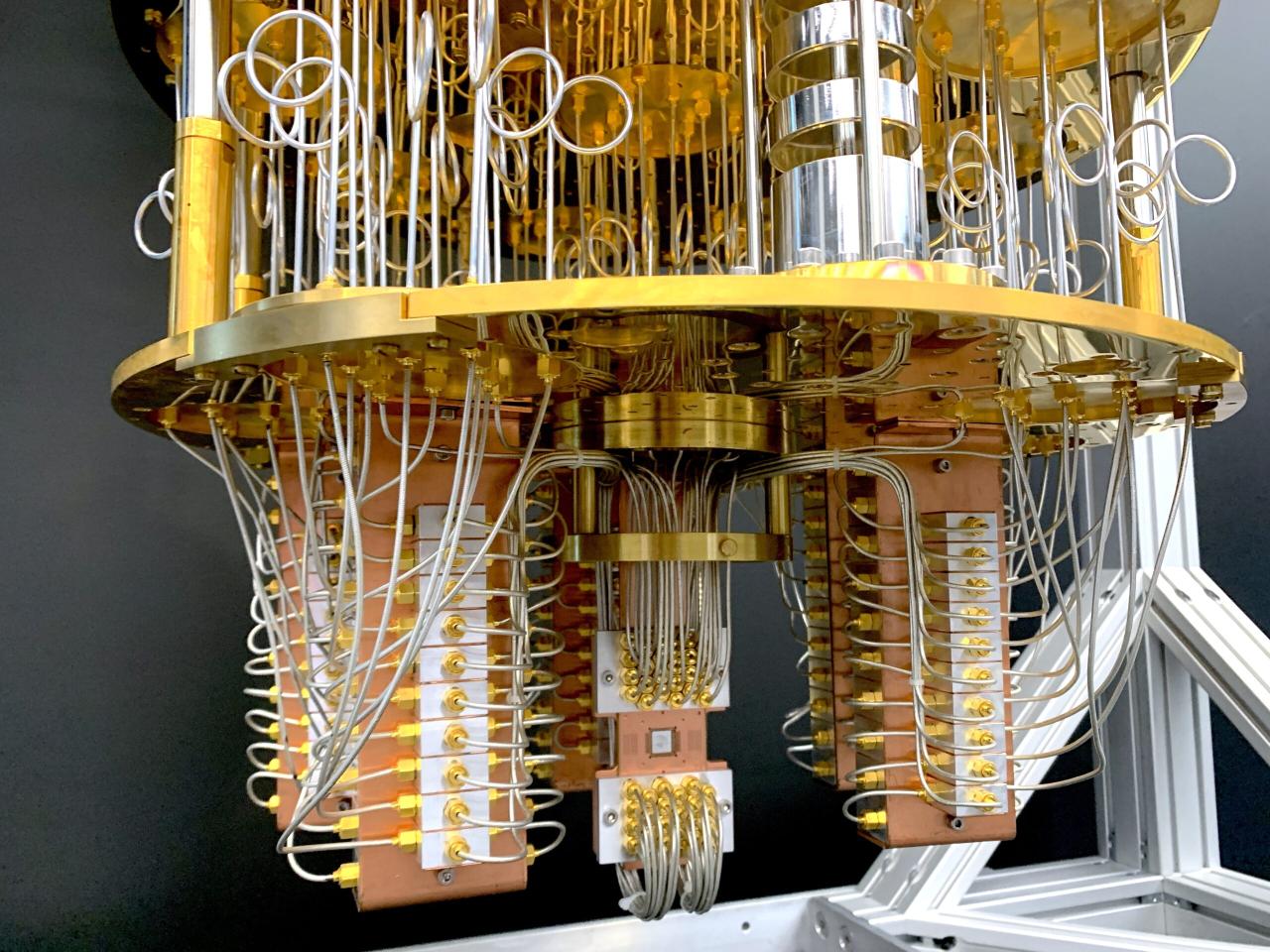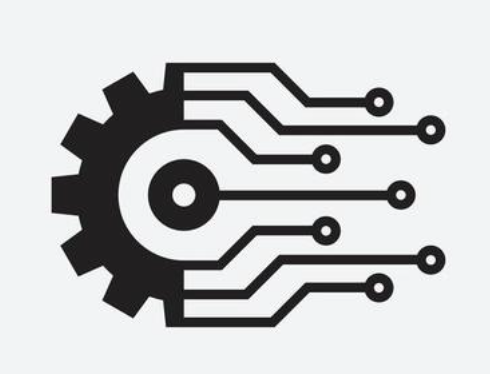Quantum Computing, a revolutionary field, harnesses the principles of quantum mechanics to perform computations in ways that are impossible for classical computers. Unlike classical computers that rely on bits representing either 0 or 1, quantum computers utilize qubits, which can exist in a superposition of both states simultaneously.
This unique property allows quantum computers to tackle complex problems that would take classical computers years, if not centuries, to solve.
Quantum computing holds immense potential across various fields, including medicine, materials science, finance, and artificial intelligence. For instance, in medicine, it could accelerate drug discovery by simulating molecular interactions with unprecedented accuracy. In finance, it could optimize investment strategies and manage risk more effectively.
The applications of quantum computing are vast and continue to expand as the technology advances.
Introduction to Quantum Computing
Quantum computing is a revolutionary field that harnesses the principles of quantum mechanics to perform computations in ways that are impossible for classical computers. It promises to solve problems that are currently intractable, with potential applications spanning various fields, including medicine, materials science, and artificial intelligence.
Fundamental Principles of Quantum Mechanics
Quantum mechanics is a fundamental theory in physics that describes the behavior of matter and energy at the atomic and subatomic levels. It differs significantly from classical physics, which governs the macroscopic world we experience. Here are some key principles of quantum mechanics that are essential to understanding quantum computing:
- Superposition: Unlike classical bits, which can be either 0 or 1, quantum bits (qubits) can exist in a superposition of states, simultaneously representing both 0 and 1. This allows quantum computers to explore multiple possibilities concurrently, significantly enhancing their computational power.
- Entanglement: Entanglement is a phenomenon where two or more qubits become interconnected, even when physically separated. Changes to one entangled qubit instantaneously affect the others, regardless of distance. This property enables quantum computers to perform complex calculations by exploiting the correlations between entangled qubits.
- Quantum Interference: Quantum interference refers to the phenomenon where quantum states can interact with each other, leading to constructive or destructive interference patterns. This property is utilized in quantum algorithms to amplify the desired outcomes and suppress unwanted ones.
Differences Between Classical and Quantum Computers
Classical computers use bits, which can be either 0 or 1, to represent information. They perform calculations by manipulating these bits sequentially. Quantum computers, on the other hand, leverage qubits, which can exist in a superposition of states. This allows them to perform computations on multiple possibilities simultaneously, offering significant advantages in certain tasks.
| Feature | Classical Computer | Quantum Computer |
|---|---|---|
| Information Representation | Bits (0 or 1) | Qubits (superposition of 0 and 1) |
| Computation | Sequential manipulation of bits | Simultaneous manipulation of qubits in superposition |
| Speed | Limited by sequential processing | Potentially much faster for specific tasks due to parallel computation |
| Applications | Wide range of applications, including everyday tasks and complex calculations | Specialized applications where quantum algorithms offer significant advantages |
Real-World Applications of Quantum Computing
Quantum computing has the potential to revolutionize various fields by solving problems that are currently intractable for classical computers. Here are some examples:
- Drug Discovery and Development: Quantum computers can simulate complex molecular interactions, accelerating the discovery and development of new drugs and therapies.
- Materials Science: Quantum computers can model the behavior of materials at the atomic level, leading to the development of new materials with enhanced properties.
- Financial Modeling: Quantum computers can optimize financial portfolios and analyze market data with unprecedented accuracy.
- Cryptography: Quantum computers pose a threat to current encryption methods, but they can also be used to develop new, more secure cryptographic algorithms.
Quantum Bits (Qubits)
The fundamental unit of information in classical computing is the bit, which can be either 0 or 1. In contrast, quantum computing utilizes qubits, which can exist in a superposition of states, representing both 0 and 1 simultaneously. This unique property of qubits allows quantum computers to perform computations that are impossible for classical computers.
Superposition and Entanglement, Quantum Computing
Superposition is a fundamental principle in quantum mechanics that allows a qubit to exist in multiple states simultaneously. Unlike classical bits, which can only be in one state at a time, a qubit can be in a combination of both 0 and 1 states, with a certain probability for each.
This superposition property enables quantum computers to explore a vast number of possibilities concurrently, leading to significant speedups for certain types of computations.Entanglement is another crucial concept in quantum computing. It describes a correlation between two or more qubits, where the state of one qubit is dependent on the state of the others.
This entanglement allows qubits to be linked together in a way that is not possible with classical bits, enabling quantum computers to perform complex calculations that are impossible for classical computers.
Types of Qubits
There are several different types of qubits, each with its own advantages and limitations. Some of the most common types include:
- Superconducting Qubits:These qubits are based on superconducting circuits that can be manipulated using microwave pulses. Superconducting qubits are known for their long coherence times and relatively high accuracy, making them suitable for complex quantum algorithms.
- Trapped Ion Qubits:These qubits use individual ions trapped in electromagnetic fields. By applying laser pulses, the ions’ energy levels can be controlled, enabling them to perform quantum computations. Trapped ion qubits are known for their high fidelity and long coherence times.
- Neutral Atom Qubits:These qubits use neutral atoms, which are cooled to extremely low temperatures and trapped in optical lattices. The atoms’ internal states can be manipulated using lasers, allowing them to perform quantum operations. Neutral atom qubits are known for their scalability and potential for building large-scale quantum computers.
- Photonic Qubits:These qubits use photons, particles of light, to encode quantum information. Photonic qubits are relatively easy to manipulate and can be transmitted over long distances, making them suitable for quantum communication applications.
Quantum Computing Hardware

The realization of quantum computing requires specialized hardware capable of manipulating and controlling quantum systems. Several approaches are under development, each with its own advantages and challenges.
Types of Quantum Computing Hardware
Different types of quantum computing hardware are being explored to harness the power of quantum mechanics for computation.
- Superconducting Qubits: Superconducting qubits are based on the principle of superconductivity, where electrons flow with zero resistance at extremely low temperatures. These qubits are typically fabricated using thin films of superconducting materials, such as aluminum or niobium. They are controlled and measured using microwave pulses and are known for their relatively long coherence times.
- Trapped Ions: Trapped-ion qubits utilize individual ions, which are atoms that have lost or gained electrons, confined in a vacuum chamber using electromagnetic fields. The ions are manipulated by applying laser pulses that excite specific energy levels within the ions. Trapped-ion systems offer high coherence times and excellent controllability.
- Photonic Qubits: Photonic qubits utilize photons, the fundamental particles of light, as quantum bits. They are manipulated using optical elements such as beam splitters, mirrors, and phase shifters. Photonic qubits offer the potential for long-distance communication and entanglement.
- Neutral Atoms: Neutral-atom qubits utilize individual atoms, which are not charged, trapped in optical lattices formed by intersecting laser beams. These atoms are manipulated by applying laser pulses that excite specific energy levels. Neutral-atom systems offer scalability and high coherence times.
- Topological Qubits: Topological qubits exploit topological properties of materials to protect quantum information from environmental noise. These qubits are based on exotic states of matter, such as Majorana fermions, and are known for their potential for fault tolerance.
Challenges and Limitations
Building and operating quantum computers present significant challenges:
- Coherence Time: Maintaining the delicate quantum states of qubits is crucial for computation. Environmental noise can disrupt these states, leading to errors. Achieving long coherence times is a major challenge.
- Scalability: Scaling up quantum computers to a large number of qubits is essential for solving complex problems. However, increasing the number of qubits while maintaining coherence and control is a major hurdle.
- Error Correction: Errors are inevitable in quantum computing due to noise and imperfections in hardware. Developing effective error correction techniques is crucial for achieving reliable computation.
- Cost and Complexity: Building and operating quantum computers require specialized facilities, expertise, and substantial financial resources. The complexity of quantum hardware makes it a challenging engineering endeavor.
Comparison of Different Approaches
| Approach | Advantages | Disadvantages |
|---|---|---|
| Superconducting Qubits | Relatively long coherence times, mature fabrication techniques | Susceptible to noise, limited scalability |
| Trapped Ions | High coherence times, excellent controllability | Complex and expensive to operate, limited scalability |
| Photonic Qubits | Potential for long-distance communication, robust to noise | Difficult to entangle, limited controllability |
| Neutral Atoms | Scalability, high coherence times | Limited controllability, sensitive to environmental noise |
| Topological Qubits | Potential for fault tolerance, robust to noise | Early stage of development, difficult to fabricate |
Future of Quantum Computing
Quantum computing, a nascent field with immense potential, is still in its early stages of development. While significant strides have been made in recent years, several challenges remain before quantum computers become mainstream. This section delves into the current state of quantum computing, explores potential breakthroughs, and examines the ethical and societal implications of its widespread adoption.
Current State of Development and Challenges
Despite the remarkable progress in quantum computing, several challenges hinder its widespread adoption. These challenges include:
- Scalability: Building large-scale quantum computers with a high number of qubits is a major challenge. The stability and coherence of qubits are sensitive to environmental noise, making it difficult to maintain their quantum states for extended periods. This limits the size and complexity of quantum algorithms that can be implemented.
- Error Correction: Quantum computers are susceptible to errors due to noise and decoherence. Quantum error correction techniques are being developed to mitigate these errors, but they require significant overhead in terms of qubits and computational resources.
- Hardware Development: Building quantum hardware is a complex and expensive undertaking. There are various competing technologies, such as superconducting qubits, trapped ions, and photonic qubits, each with its own advantages and disadvantages. Further research and development are needed to improve the performance and scalability of these technologies.
- Software Development: Developing quantum algorithms and software is a challenging task that requires expertise in quantum mechanics, computer science, and specific domain knowledge. The development of quantum software libraries and tools is crucial to facilitate the adoption of quantum computing.
Potential Breakthroughs and Future Advancements
Despite the challenges, ongoing research and development efforts are expected to lead to significant breakthroughs in quantum computing. These breakthroughs could include:
- Improved Hardware: Advancements in materials science, nanotechnology, and fabrication techniques could lead to the development of more robust and scalable quantum hardware. For example, researchers are exploring new materials and designs for superconducting qubits that can operate at higher temperatures and are less susceptible to noise.
- New Quantum Algorithms: The development of new and more efficient quantum algorithms could unlock the potential of quantum computers for a wider range of applications. For example, researchers are developing algorithms for drug discovery, materials science, and financial modeling.
- Hybrid Quantum-Classical Computing: Combining the strengths of quantum and classical computers could lead to more powerful and versatile computing systems. This approach involves using quantum computers to solve specific sub-problems that are intractable for classical computers, while using classical computers for other tasks.
Ethical and Societal Implications
The widespread adoption of quantum computing raises important ethical and societal implications. These include:
- Security Concerns: Quantum computers could potentially break current encryption algorithms, posing a significant threat to cybersecurity. This could have serious implications for financial transactions, data privacy, and national security.
- Job Displacement: The automation potential of quantum computing could lead to job displacement in certain industries. It is crucial to develop strategies for retraining and upskilling workers to adapt to the changing job market.
- Access and Equity: Ensuring equitable access to quantum computing resources is essential to prevent the creation of a digital divide. It is important to develop policies and initiatives to make quantum computing accessible to all.
Final Thoughts

The future of quantum computing is bright, promising to revolutionize our world in ways we can only begin to imagine. As researchers continue to overcome the challenges associated with building and operating quantum computers, we can expect to see increasingly powerful and accessible quantum technologies.
The potential impact of this technology on society and the economy is significant, paving the way for new discoveries, innovations, and solutions to some of the world’s most pressing problems.
FAQ Overview
What are the main challenges in developing quantum computers?
Building and operating quantum computers present significant challenges, including maintaining the delicate quantum states of qubits, minimizing noise and errors, and scaling up the technology to handle more complex problems.
How does quantum computing differ from classical computing?
Quantum computers leverage quantum mechanics principles, allowing them to perform computations in ways that are impossible for classical computers. Classical computers use bits, which can be either 0 or 1, while quantum computers use qubits, which can exist in a superposition of both states simultaneously.
When will quantum computers be widely available?
While quantum computing is still in its early stages, significant progress is being made. It is expected that quantum computers will become more widely available and accessible in the coming years, but widespread adoption is likely to take several decades.
What are the ethical implications of quantum computing?
The development and widespread adoption of quantum computing raise important ethical considerations, such as potential misuse for cryptography, data security, and societal impact. It is crucial to address these concerns and ensure responsible development and deployment of this powerful technology.
